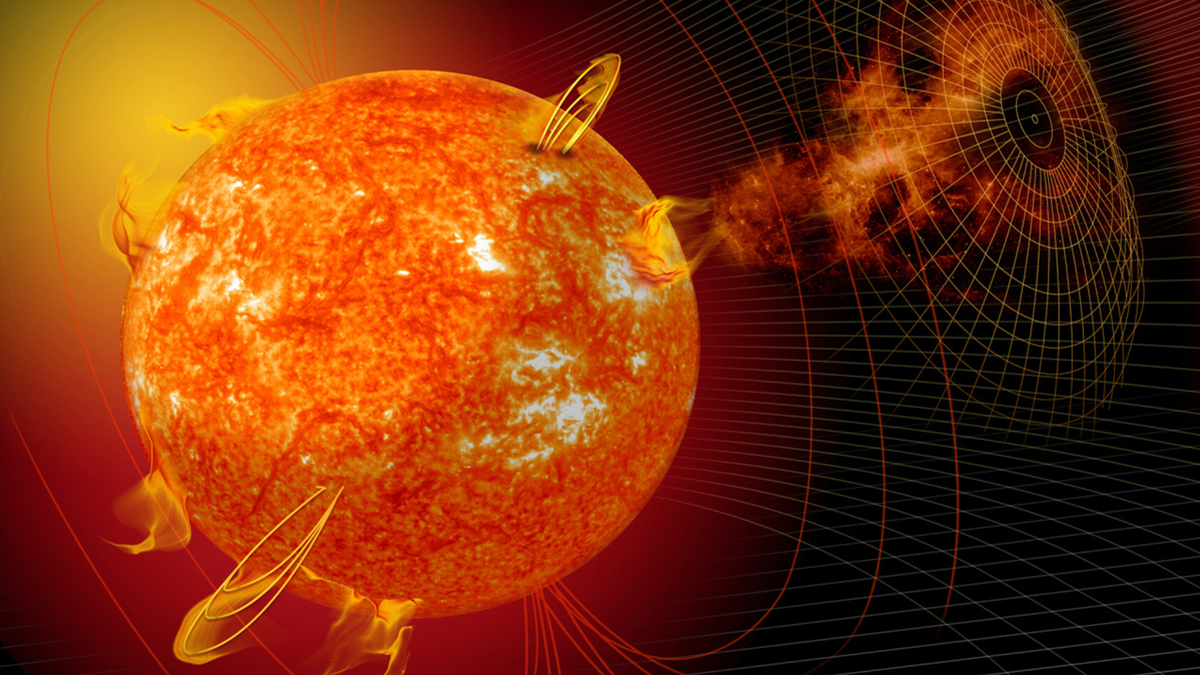By: Jerry Zhang
Every eleven years, as a part of the Sun’s solar cycle, the Sun reaches its solar maximum. During this period, there is an increase in solar activities such as solar flares or coronal mass ejections (CMEs). One of these CMEs hit Earth on May 17, bathing both hemispheres in a green aurora that swirled in the nighttime sky.
Days after Earth’s nighttime spectacle, on May 20, 2024, the red planet was engulfed by an X12 solar flare, the strongest type of solar flare, which enveloped it in a jade-green hue. Through the use of NASA’s MAVEN (Mars Atmosphere and Volatile Evolution) Orbiter, scientists were able to observe the solar event. According to MAVEN Space Weather Lead, Christina Lee, “This was the largest solar energetic particle event that MAVEN has ever seen. There have been several solar events in past weeks, so we were seeing wave after wave of particles hitting Mars.”
While MAVEN was observing Mars during the solar flare, some of the other robots were not as lucky. The Curiosity rover and the Mars Odyssey orbiter were both temporarily incapacitated after charged particles hit the cameras of the robots which rendered them ineffective.
This encounter with the solar storm not only incapacitated the robots but also left them permanently damaged. “Everybody’s solar panels took a hit,” said Shannon Curry, the principal investigator of NASA’s Mars Atmosphere and Volatile Evolution Orbiter. The damage suffered was equivalent to the mechanical degradation experienced in a whole year.
Despite how beautiful the aurora may look, it holds a deadly surprise. Since Mars does not have a magnetic field or an atmosphere, it receives the full force of the gamma rays striking its surface. While this results in a planet-covering aurora, it is also extremely radioactive. If one were to have been on Mars during the storm, they would have received 8100 micrograys of radiation: equivalent to 30 chest x-rays. The information that this solar storm has provided to scientists will aid in future missions to Mars as it gives an estimate of how much radiation astronauts might have to face on the surface of the red planet.
The recent solar activity has allowed scientists and the general public to appreciate the beauty of the solar system. Stunning auroras of varying shades have been observed on both Mars and Earth, providing an opportunity for all to admire the beauty while scientists have been able to learn more about the dangers that radiation may pose when we finally explore the stars.
Links:
https://www.scientificamerican.com/article/the-strongest-solar-storm-in-20-years-did-little-damage-but-worse-space/
https://www.skyatnightmagazine.com/news/mars-solar-storm-20-may-2024
https://www.nytimes.com/2024/06/13/science/mars-aurora-solar-storm.html











